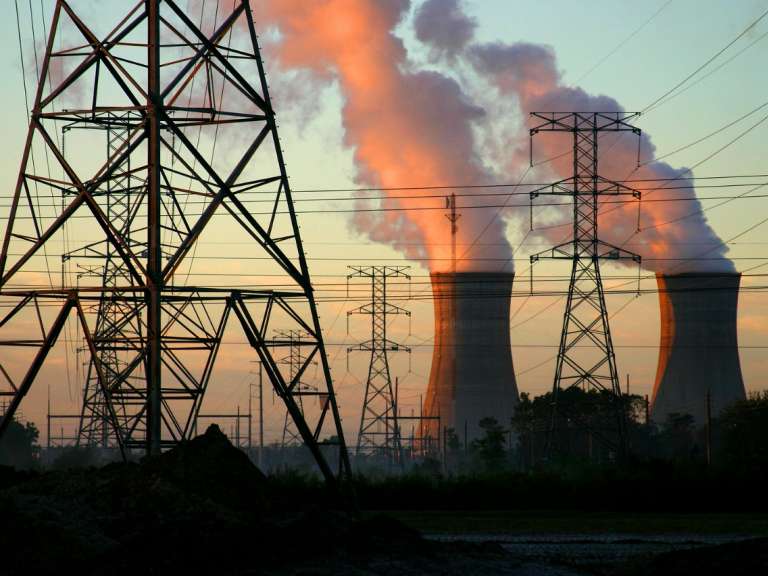Fossil Fuel Plant Trends: What's Next in Europe?
Robert RapierCoal consumption will continue to decline if the EU is to meet its future emission targets, but conventional power plant operators are rising to carve out a new role for themselves.

Europe is well ahead of the rest of the world when it comes to integrating renewable power into the electrical grid. Modern renewables like wind and solar power made up less than 3 percent of the world's primary energy consumption in 2015, according to the BP Statistical Review of World Energy. In the European Union (EU), however, that number was over 8 percent. As a result, fossil fuel plant trends in the EU are changing radically.
According to the European Commission, the EU has set targets for cutting its greenhouse gas emissions to 80 percent below 1990 levels by 2050. New policies collectively set targets to reduce greenhouse gas emissions to 20 percent of 1990 levels by 2020 and 40 percent by 2030. The EU must obtain 20 percent of its energy from renewables by 2020 and 27 percent by 2030. Energy efficiency must also improve by 27 percent by 2030.
This policy framework has led to electricity generation in the EU that has been relatively unchanged for more than a decade. Renewables like wind and solar power have made large inroads in many countries. As a result, the baseload need for fossil fuel power plants is diminishing, while at the same time, the need for fast-acting balancing power is increasing.
The BP Statistical Review has shown that wind power production in the EU has grown by 100 fold to reach 310 terawatt-hours since 1994. At times, renewables have generated well over 100 percent of a country's electricity demand. For example, on a windy day in 2015, Denmark briefly produced 140 percent of the country's electrical demand through wind power, according to The Guardian.
Europe's highly interconnected grid helps balance out these periods of surplus power. Interconnectors allow most of the surplus to be shared between Germany, Norway, and Sweden. However, during times of high renewable electricity production, the spot price for power plummets, along with demand for fossil fuel power. There are also times when a region's renewable power output can drop to near zero. That scenario can lead to rolling blackouts if sufficient baseload power can't be brought online rapidly enough to meet demand. This combination of declining demand and falling power prices creates a dilemma for owners and operators of conventional power plants. It removes the economic incentive to make investments to meet the need for balance and backup capacity in the grid.
Jukka-Pekka Niemi, a general manager at Wärtsilä Energy Solutions, discusses an additional complication in Diesel & Gas Turbine Worldwide: "The European electricity market is, despite good efforts from [the] European Commission, still fragmented." Policies across different countries can be inconsistent. That means the sub-regions of Europe may require different optimal solutions. The overall EU framework creates targets, but each country has to ensure that sufficient investments in baseload and back-up power are made. Niemi says, "the increase in renewables in the coming years will emphasize the need for flexible power generation."
Some companies have responded by developing hybrid utility-scale solar photovoltaic (PV) plants. Others are investing in natural gas turbine power plants that have the most flexibility to adjust to changes in power demand.
Where does that leave owners of conventional coal-fired power plants? A Climate Analytics report states that to meet the emission targets, the EU would have to shut down all 300 of its currently operating coal-fired power plants. That isn't a foregone conclusion, however. According to the IEA Clean Coal Centre, biomass is being successfully co-fired with coal at power plants across Europe with recent projects achieving up to 100 percent biomass. Continued successes in this area could allow these plants to continue operating while still meeting the EU's emission goals. Carbon capture and storage is another option that, with renewable biomass, can effectively take carbon out of the atmosphere.
Coal was the fuel of choice for the industrialization of Europe. However, that came at the price of high greenhouse gas emissions. In response to EU climate targets, fossil fuel plant trends are undergoing a dramatic change. According to the BP Statistical Review, the countries that currently comprise the European Union experienced a 48 percent decline in coal consumption from 1987 to 2015. That decline will likely continue if the EU is to meet its future emission targets, but conventional power plant operators are rising to carve out a new role in the energy landscape of the future.
The EIA estimated that coal will overtake natural gas in power production this winter. Are these simply seasonal power generation trends?
With renewable energy penetration surging to record levels, experience from the German power market is of worldwide interest.
Smart appliances, electric vehicles, and the smart grid will all play a vital role in consumer energy demand management.